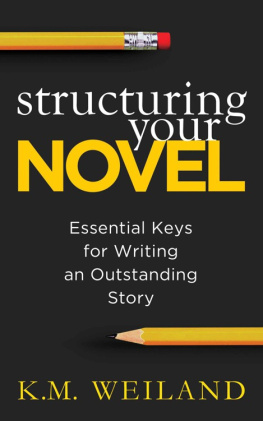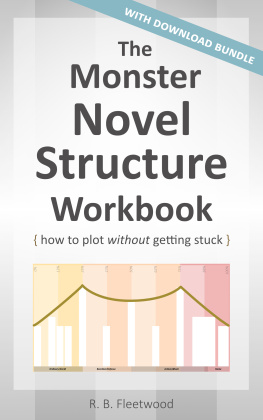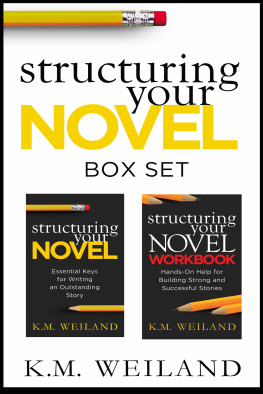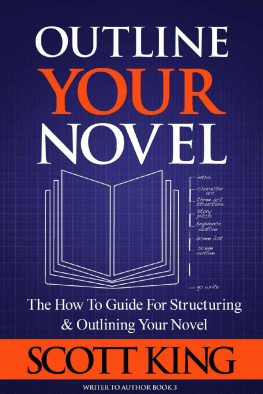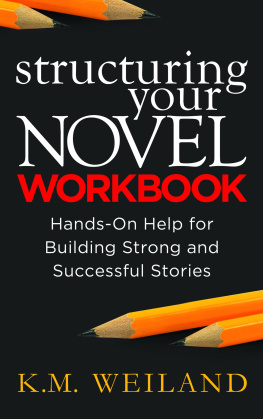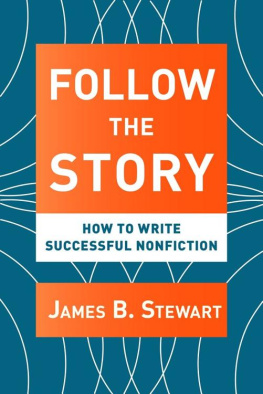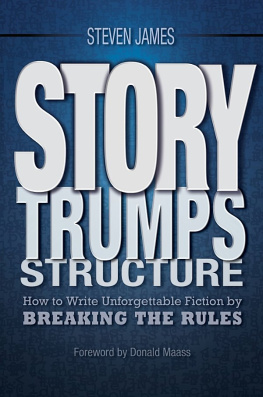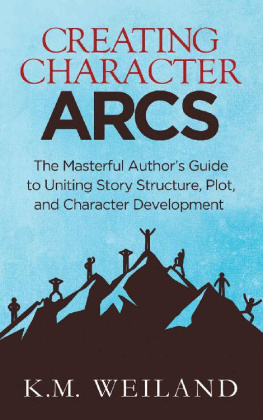K. M. Weiland - Structuring Your Novel: Essential Keys for Writing an Outstanding Story
Here you can read online K. M. Weiland - Structuring Your Novel: Essential Keys for Writing an Outstanding Story full text of the book (entire story) in english for free. Download pdf and epub, get meaning, cover and reviews about this ebook. year: 2013, publisher: PenForASword, genre: Detective and thriller. Description of the work, (preface) as well as reviews are available. Best literature library LitArk.com created for fans of good reading and offers a wide selection of genres:
Romance novel
Science fiction
Adventure
Detective
Science
History
Home and family
Prose
Art
Politics
Computer
Non-fiction
Religion
Business
Children
Humor
Choose a favorite category and find really read worthwhile books. Enjoy immersion in the world of imagination, feel the emotions of the characters or learn something new for yourself, make an fascinating discovery.
- Book:Structuring Your Novel: Essential Keys for Writing an Outstanding Story
- Author:
- Publisher:PenForASword
- Genre:
- Year:2013
- Rating:5 / 5
- Favourites:Add to favourites
- Your mark:
Structuring Your Novel: Essential Keys for Writing an Outstanding Story: summary, description and annotation
We offer to read an annotation, description, summary or preface (depends on what the author of the book "Structuring Your Novel: Essential Keys for Writing an Outstanding Story" wrote himself). If you haven't found the necessary information about the book — write in the comments, we will try to find it.
I have long wished for a book like this. Structuring Your Novel is so much more than a writing craft bookits a recipe to help writers structure a deep, meaningful journey for their hero that will captivate readers from beginning to end.Angela Ackerman, Author of The Emotion Thesaurus
There is absolute gold in this bookand I am grateful that the author has a real talent for distilling some of the somewhat clunky information found elsewhere, into really simple-to-understand and easy-to-follow techniques.Robert Scanlon
This book shows a writer how to structure their novel from beginning to end in a no-nonsense manner. Its fast and easy reading, and MAKES SENSE!Carrie C. Spencer
About the BookIs Structure the Hidden Foundation of All Successful Stories?
Why do some stories work and others dont? The answer is structure. In this IPPY and NIEA-Award winning guide from the author of the bestselling Outlining Your Novel, you will learn the universal underpinnings that guarantee powerful plot and character arcs. An understanding of proper story and scene structure will show you how to perfectly time your storys major events and will provide you with an unerring standard against which to evaluate your novels pacing and progression. Structuring Your Novel will show you:
- How to determine the best techniques for empowering your unique and personal vision for your story.
- How to identify common structural weaknesses and flip them around into stunning strengths.
- How to eliminate saggy middles by discovering your centerpiece.
- Why you should NEVER include conflict in every scene.
- How to discover the questions you dont want readers asking about your plotand then how to get them to ask the right questions.
Story structure has enabled countless bestselling and classic authors. Now its your turn! More Praise for Structuring Your Novel
K.M. Weiland delivers another exceptional resource for writersoffering practical guidance on everything from crafting a books hook to its resolution.Elizabeth Spann Craig, Author of the Myrtle Clover Mysteries
Structuring Your Novel will give you the blueprint for making your story more powerful. Im taking this one with me to my desert island!Jennifer Ibarra
After finishing the book, I reviewed my own writing and was easily able to see where the story wasnt working, understand why it wasnt, and figure out what I needed to do to fix it.Abby Geiger
More storytelling assistance from K.M. Weiland:Outlining Your Novel: Map Your Way to SuccessCan outlining help you write a better story?
K. M. Weiland: author's other books
Who wrote Structuring Your Novel: Essential Keys for Writing an Outstanding Story? Find out the surname, the name of the author of the book and a list of all author's works by series.

